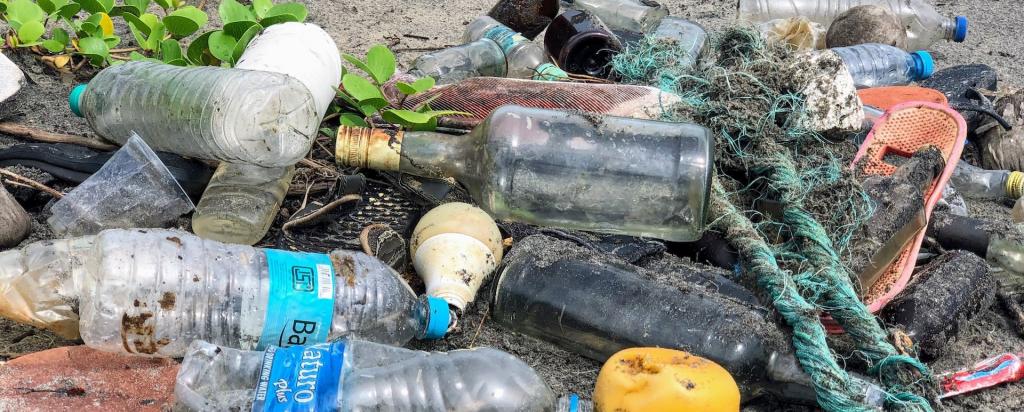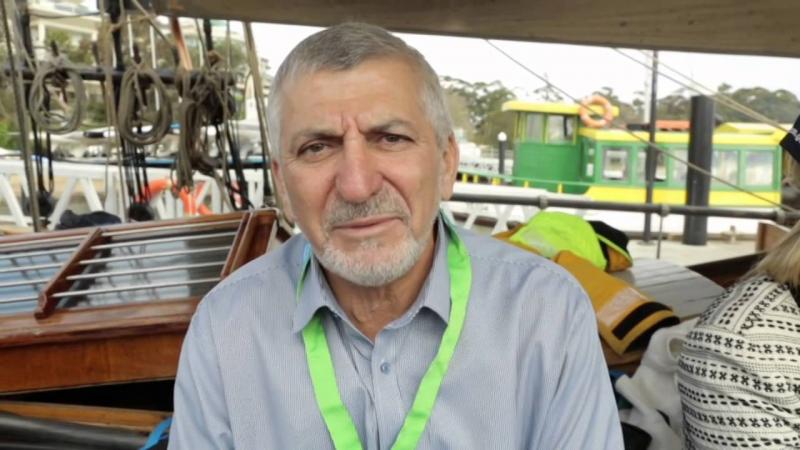
Published on the 5th December 2014 by ANSTO Staff
ANSTO has been involved in a plastic trawling expedition from Hobart to Sydney researching the impact of plastics on pelagic birds and the marine ecosystem. Here is some background information about the expedition and research.
About Professor Richard Banati and his technique
Professor Richard Banatioriginally worked as a medical doctor before becoming interested in investigating non-obvious causes of chronic brain diseases. During his early career he worked in a research team that used slightly radioactive tracers to understand better ways of determining the most effective doses of pharmaceuticals for patients.
At the time, the orthodox approach to prescribing drugs had largely been ‘more is better’, with doctors prescribing higher doses of drugs until patients experienced symptoms. The team Richard was in confirmed lower doses had the maximum desired effect, and everything above that was superfluous - causing unnecessary side-effects.
The tracer principle, on which this medical research was based, involves making a product slightly radioactive so that with certain detection equipment (such as a PET scanner) one can see it safely being distributing in the body. During his early research, Richard became interested in the fact that this principle could be significantly upscaled, and that its applications could reach far beyond neuroscience.
Fast forward a few years and Professor Banati is now using the tracer principle to understand some of the big questions of our time. Since 2008 he has worked at the Australian Nuclear Science and Technology Organisation (ANSTO). Here he uses the tracer principal and nuclear science techniques to study materials at the atomic level, with Australian instruments that are sensitive enough to detect a glass of wine diluted in a volume of water the size of Sydney Harbour.
Which type of birds and why?
The Shearwater seabird seasonally journeys in a figure of eight across the equator from the Northern to the Southern hemisphere, from the waters of Japan and Siberia to the waters of Australia, it feeds, never touching land, on marine life from very different environments - some polluted, others still pristine. Its organs and feathers carry the signature of its diet and thus the state of the environment along its travelled route. For this reason, seabirds are studied as bio-indicators in ecotoxicology. They are sentinels for the health of the world’s marine ecosystems and the life that feeds on it.
Research chronology
Early last year some research based on these techniques, and performed in collaboration with Dr Jennifer Laver from Monash University, was released concerning feathers of seabirds, and confirmed the presence of plastics and chemicals in the food chain.
Elements that were found in the bird’s feather were similar to those found in plastics in its gut, raising the possibility that potentially toxic contaminants, such as cadmium and others, transfer into the body after ingestion and remain there after excretion.
It was known that the plastic volumes in the stomachs of these birds, which in some cases were 10 per cent full of plastics broken down into fingernail sized pieces, would be mechanically injuring. But separate to this, what Richard and his team have since been doing is looking at this issue at the atomic scale, and specifically researching the elemental transfer into the birds.
Leading to late last year and earlier this year, when Richard started looking at whether different types of plastics have different impacts on elemental transfers in the birds. Richard concluded this in time for the TedXSydney 2014 in April, where he released findings including:
- Plastics floating in the oceans have a complex degradation process which makes them potentially more, rather than less, hazardous than previously thought.
- The process of degradation is made more complex by the fact that plastics, many of which have been recycled already, are a mix of many components.
- During the process of degrading, plastics, including biodegradable plastics, break down into smaller and smaller pieces, meaning their surface area increases dramatically.
- Greater surface area means greater interaction with the environment, which means degraded plastics – including biodegradable plastics - both release more toxins such as cadmium and mercury into the environment, and attract and absorb more.
Basically Richard is setting about to disprove the old adage in environment management that ‘the solution to pollution is dilution’. What he needed though is a bigger sample….
Which is why Richard has taken to the ocean, chartering a ship from Hobart to Sydney – trawling for plastics and micro-plastics so that he can increase his sample size and research the impact that plastics have on the marine environment and food chain.
The sampling along the southeast coast is being done on the Danish tall ship Yukon, which stopped at Port Hacking River today, then will be trawling Sydney Harbour from the 29th.
The samples which are collected will be taken back to ANSTO, and analysed using a range of tools, which can include:
- The Australian Synchrotron in Melbourne measures chemical composition of the plastic samples (the X-ray fluorescence beam and Infrared beam).
- A process called Neutron Activation in Sydney, where neutrons from the OPAL nuclear research reactor are bombarded against samples, making them slightly radioactive and enabling their giving off a measurable gamma spectrum. Scientists then put the samples into a gamma counter to measure the energy of the particles.
- Beamline instruments, such as Kwoka, which are used to understand the structure of biological material
Then Richard will be closer to knowing the different impacts that different types of plastics have on the food chain and marine ecosystem.
